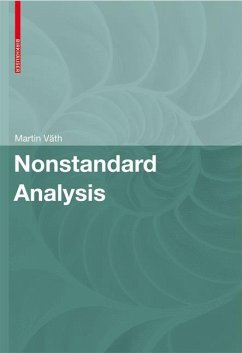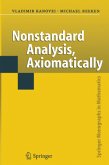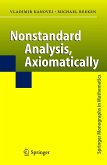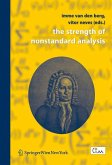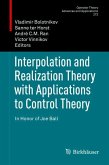This book introduces Robinson's nonstandard analysis, an application of model theory in analysis. Unlike some texts, it does not attempt to teach elementary calculus on the basis of nonstandard analysis, but points to some applications in more advanced analysis. The contents proceed from a discussion of the preliminaries to Nonstandard Models; Nonstandard Real Analysis; Enlargements and Saturated Models; Functionals, Generalized Limits, and Additive Measures; and finally Nonstandard Topology and Functional Analysis. No background in model theory is required, although some familiarity with analysis, topology, or functional analysis is useful. This self-contained book can be understood after a basic calculus course.
Nonstandard analysis was originally developed by Robinson to rigorously justify infinitesimals like df and dx in expressions like df/dx in Leibniz' calculus or even to justify concepts like delta-`functions'. However, the approach is much more general and was soon extended by Henson, Luxemburg and others to a useful tool especially in more advanced analysis, topology, and functional analysis. The book is an introduction with emphasis on those more advanced applications in analysis which are hardly accessible by other methods. Examples of such topics are a deeper analysis of certain functionals like Hahn-Banach limits or of finitely additive measures: From the viewpoint of classical analysis these are strange objects whose mere existence is even hard to prove. From the viewpoint of nonstandard analysis, these are rather 'explicit' objects.
Formally, nonstandard analysis is an application of model theory in analysis. However, the reader of the book is not expected to have any background in model theory; instead knowledge of calculus is required and, although the book is rather self-contained, background in more advanced analysis or (elementary) topology is useful.
Nonstandard analysis was originally developed by Robinson to rigorously justify infinitesimals like df and dx in expressions like df/dx in Leibniz' calculus or even to justify concepts like delta-`functions'. However, the approach is much more general and was soon extended by Henson, Luxemburg and others to a useful tool especially in more advanced analysis, topology, and functional analysis. The book is an introduction with emphasis on those more advanced applications in analysis which are hardly accessible by other methods. Examples of such topics are a deeper analysis of certain functionals like Hahn-Banach limits or of finitely additive measures: From the viewpoint of classical analysis these are strange objects whose mere existence is even hard to prove. From the viewpoint of nonstandard analysis, these are rather 'explicit' objects.
Formally, nonstandard analysis is an application of model theory in analysis. However, the reader of the book is not expected to have any background in model theory; instead knowledge of calculus is required and, although the book is rather self-contained, background in more advanced analysis or (elementary) topology is useful.

